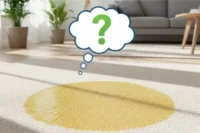How to Clean Oil Paint Brushes After Painting for Beginner
Published: 12 Apr 2025
Cleaning oil paintbrushes is one of the most important steps in oil painting. Leftover paint can harden and damage the bristles if you do not clean them properly. This can ruin your brushes and affect your artwork. Many artists face this issue, especially beginners. But do not worry, there are simple ways to clean oil paint brushes using tools like turpentine, paint thinner, or even natural options. This guide will teach you easy and safe methods to clean oil paint brushes, use chemicals, or find a chemical-free solution.
Why Cleaning Oil Paint Brushes Is Important
Keeping your oil paint brushes clean is a smart habit for every artist. It helps your brushes stay soft and last longer. Dirty brushes become stiff and rigid, which is bad for your diy easy art and tools.
Clean brushes also save you money. You do not need to buy new ones repeatedly, and a well-cleaned brush can last for years, even with daily oil painting.
Another big reason is colour control. When you clean oil paint brushes between colours, you keep your paint clean and fresh. Dirty brushes mix colours and make your painting look muddy.

You can clean them with turpentine, paint thinner, or even simple home methods. The purpose is to protect your tools and achieve better results in your artwork.
Tip Box: Always clean your brushes after each painting session to avoid hard bristles and save your favourite tools.
What You’ll Need (Tools & Materials)
Before you start cleaning, gather a few simple items. These tools will help you easily remove oil paint from your brushes without damaging them.
1. Turpentine or Paint Thinner
These are the most common choices. Both work well to break down thick oil paint. Turpentine is strong and fast, while paint thinner is slightly milder but effective. These are great for deep cleaning after heavy oil painting sessions.
2. Linseed Oil or Baby Oil (Optional)
If you want a gentler way, use linseed oil. It softens the paint and is safer than harsh chemicals. Artists often ask, “How do you clean oil paint brushes with linseed oil?” Just dip your brush in linseed oil and wipe off the paint gently. You can also use baby oil as a soft cleaner for everyday use.
3. Dish Soap
The dish soap helps remove leftover oil and grease. After using turpentine or oil, wash your brush with warm water and dish soap to remove any remaining colour and oil.
4. Vinegar
Cleaning oil paint brushes with vinegar is a natural method. Heat some vinegar (not boiling), dip your brush in, and gently scrub. This is perfect for artists who want to avoid strong smells or chemicals.
5. Paper Towels or Cloth
Use these to wipe off extra paint between steps. They help keep things neat and prevent paint from spreading.
6. A Glass Jar or Container
Always use a jar to hold your turpentine, thinner, or vinegar. Avoid plastic containers—they can melt or react with the solvent.

Method 1: How to Clean Oil Paint Brushes with Turpentine or Paint Thinner
Using turpentine or paint thinner is one of the most common ways to clean oil paint brushes. It removes thick oil paint quickly and helps keep your brushes soft and ready for the next use.
Step-by-Step Process
1. Wipe off extra paint with a rag
Before using any solvent, gently wipe off as much paint as possible using an old cloth or paper towel. This step speeds up the cleaning process.
2. Dip the brush into turpentine or paint thinner
Pour a small amount of turpentine or paint thinner into a glass jar. Dip your brush in and let it soak for a few seconds.
3. Swirl until the paint dissolves
Swirl the brush inside the jar. The paint will start to break down and mix into the liquid. Keep swirling until most of the paint comes off.
4. Rinse with soap and warm water
Now wash your brush with mild soap and warm water. Gently rub the bristles with your fingers to remove leftover paint and solvent.
5. Dry with a cloth
Use a clean towel to dry the brush. Reshape the bristles and let them air dry before using them again.

Tip: This method works well for heavy paint buildup. However, it should be done in a well-ventilated area, as turpentine and paint thinner have strong fumes.
Method 2: How to Remove Oil Paint without Turpentine
Not everyone wants to use turpentine. It smells and can be harsh on your skin. If you want a safer and easier way, use dish soap, baby oil, or linseed oil. This method works well and is excellent for beginners.
Step-by-step Guide
1. Wipe your brush clean
First, use a paper towel or cloth to wipe off extra oil paint from the brush gently. Try to remove as much paint as possible before washing.
2. Rub with baby oil or linseed oil
Now, gently swirl your brush in a small amount of baby oil or linseed oil in your palm. This will soften the paint and break it down without using strong chemicals.
3. Wash with warm water and dish soap
Next, apply a few drops of dish soap to the brush. Use warm water and your fingers to work up a lather. Keep doing this until the paint disappears.
4. Rinse and dry
Finally, rinse the brush with clean water. Shake off the extra water and gently pat it dry with a clean cloth. Let it air dry flat so the bristles stay in good shape.
Quick Clean Between Colors While Painting
When switching colours during oil painting, it is essential to clean your brush quickly. This helps you avoid muddy or mixed colours on your canvas.
Here’s how to clean oil paint brushes between colours:
- Take a small cup of paint thinner or linseed oil.
- Gently swirl your brush in the cup for a few seconds.
- Wipe it with a paper towel or cloth.
- Repeat if the colour is still there.
How to Clean a Hardened Oil Paint Brush (Dried Paint)
Has your oil paintbrush become stiff with dried paint? Do not worry—it is not useless yet. You can still save it with a simple trick using vinegar.
1. Soak in Vinegar Overnight
Place your hardened brush in a jar filled with white vinegar and let it soak overnight. Vinegar helps loosen the dried oil paint stuck in the bristles. This is a great tip for cleaning oil paint brushes with vinegar.
2. Rinse and Reshape the Bristles
After soaking, rinse the brush under warm water. Gently press and move the bristles with your fingers to remove the paint. Then, reshape the brush using your fingers. Let it dry flat. This keeps the brush in good shape for next time.
3. Use a Brush Comb If Needed
If the paint is still stuck, try using a brush comb. It helps remove paint between bristles without breaking them. This step is helpful, especially if the brush has thick, dried layers.
When your brush is clean, every stroke looks smooth and fresh. This makes it much easier to try out your painting letter ideas. A clean brush always gives better results.

Bonus Tip: Clean Your Oil Paint Palette Too
Like your brushes, your oil paint palette needs cleaning after every session. If you leave paint on it, it can dry and mix with fresh colours next time, making painting harder and messier.
Here’s how to clean your oil paint palette easily:
Step 1: Wipe it down.
Use a paper towel or soft cloth to remove wet paint. Wipe as much as you can.
Step 2: Add a little thinner or oil.
Pour a few drops of paint thinner, turpentine, or linseed oil on the palette. Rub gently with a cloth to lift off leftover paint.
Step 3: Dry and store.
Wipe again with a clean towel. Let it dry before storing. This keeps your palette ready for next time.
Conclusion
So, guys, in this article, we have covered how to clean oil paint brushes in detail. I recommend starting with simple options like linseed oil or vinegar if you want a safer, beginner-friendly method. But you can do the job well if you need deep clean, turpentine or paint thinner. Use them in a well-ventilated space.
Take care of your brushes after each painting session. It keeps your tools fresh and your painting smooth.
Do you have any questions or tips of your own? Please share them in the comments—I’d love to hear how you clean your brushes.
FAQ
The best solvent for cleaning oil paint brushes is paint thinner or turpentine. These help break down the oil paint quickly and clean your brushes deeply. You can also use linseed oil as a gentle, natural option.
No, water alone can not clean oil paintbrushes. Oil paint does not mix with water, so it would not remove the paint properly. You need a solvent like turpentine, paint thinner, or vinegar.
Oil paint can start drying on brushes within a few hours. If left overnight, it becomes hard and sticky. Always clean your brushes right after painting to keep them soft.
Yes, you can reuse hardened brushes with a little effort. Soak them in thinner, turpentine, or vinegar to soften the dried paint. Gently scrub and rinse until the bristles are clean and flexible again.

- Be Respectful
- Stay Relevant
- Stay Positive
- True Feedback
- Encourage Discussion
- Avoid Spamming
- No Fake News
- Don't Copy-Paste
- No Personal Attacks

- Be Respectful
- Stay Relevant
- Stay Positive
- True Feedback
- Encourage Discussion
- Avoid Spamming
- No Fake News
- Don't Copy-Paste
- No Personal Attacks






